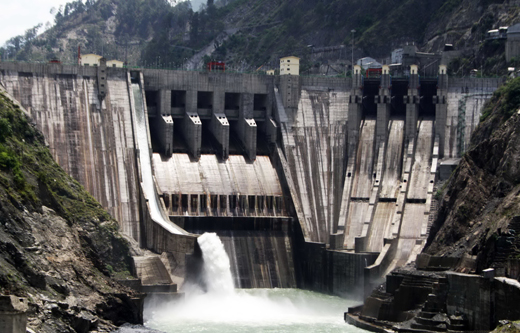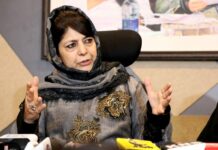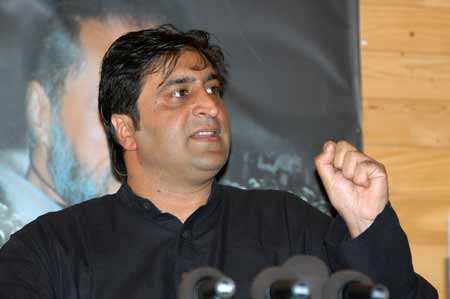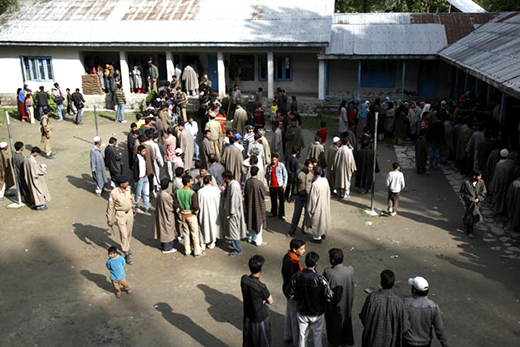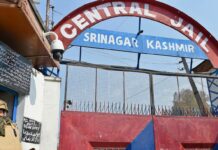Srinagar
After putting in more than three decades of service, Dr Mohammad Ismail Parray has superannuated as Director of the J&K Entrepreneurship Development Institute (EDI). He founded the institute and saw it reaching its heights.
Dr Parray is one of the few state officers who, in their careers, were entrusted with a new organisation and they succeeded in creating it as a major institution. He served as its head since the day EDI was conceived and started from one of the rooms of the state-run Institute of Management, Public Administration, and Rural Development, at Srinagar. He was one of the faculties of IMPARD.

After putting in slightly more than 14 years as EDI head, Dr Parray left it as a major organisation that has impressive campuses across the state and a reputation of being a model institution.
There were many moist eyes at the EDI’s new office at Bari Brahmana that incidentally readied within three months, when Dr Parray sought leave from the staff on Wednesday, February 28. Later, the staff, some of his friends from bureaucracy, and state’s industries minister Chander Prakash Ganga attended the farewell in a hotel. These include Kifayat Rizvi, Bilal Sahabzada, and many other officers.
Born in Akhal village of Kulgam, Dr Parray came from a modest background. An arts graduate, he choose history for his masters. He eventually did his PhD from the University of Kashmir’s Central Asian Studies department. After getting involved with some academic projects in the Varsity, briefly, Dr Parray joined IMPARD as Assistant Professor in 1987 in the Rural Development faculty. After few years, he was elevated to the position of Associate professor and for a brief period was even elevated to the position of IMPARD’s Joint Director.

In 2004, the government asked him to conduct a training course for J&KEDI that did not exist. The reason was simple: the Government of India (GoI) had transferred certain funds to the state government for setting up of EDI but for many years the money remained unspent. When the GoI started asking about the follow-up, the state government was having only two options on its table: either to return the funds or to take the creation of EDI seriously. When the issue was discussed at the highest level, the then Chief Minister Mufti Mohammad Sayeed and the Chief Secretary Dr S S Blowria were on the same page that funds should not be returned.
But the real big shift that took place on the idea was only after the industry secretary S Sahasaraman took the final call for the creation of the EDI. Within days, Parry was appointed as the OSD of the yet non-existent EDI and some people from the Industries ministry were transferred to him as aides. The EDI started operating in the IMPARD premises. Then, managing EDI was an additional assignment to Parray. What made his operations from the IMPARD single room possible was the unconditional support he got from some of the IMPARD faculty members.
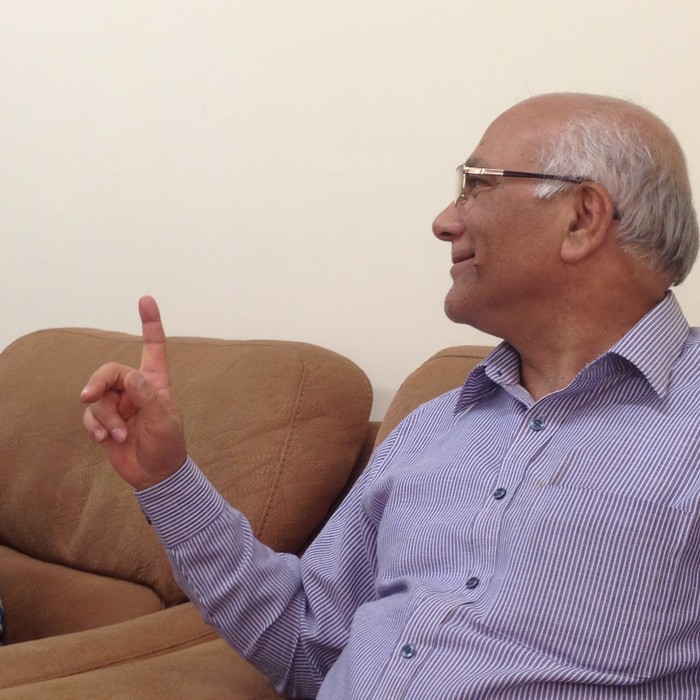
Parray started involving various GoI promotional agencies to help youth get trained in various trades. He ran small orientation and crash courses on gems and jewellery and other crafts with the help of various departments of state and central government. He managed forward linkages to help scores of farmers get into cut towers and commercial floriculture. The floriculture department later took up that initiative up.
Though the activities improved, space constraints could not. Initially, the idea was to get the banks’ fund EDI’s growth. Some banks, including J&K Bank, contributed some funds but EDI required more money. This was the time when naysayers started writing the obituary of the EDI.
Then S L Bhat, the then planning commissioner of the state, understood the importance of the initiative and decided to extend help. By then the Industry department had helped the EDI get a piece of land at Pampore the costs of which were funded by the state government. The then Minister of state in Delhi, Jairam Ramesh went out of the way to ensure the EDI comes up as early possible. He would talk to the Chief Ministers’ in Srinagar to help the EDI. This was how the towering complex emerged at Sempora in a record time.
A workaholic, and hardworking man, Parray had never availed a leave during his stint in EDI. He would visit the upcoming site even during the dead of the night to ensure the winters do not come at the pace of work. As the most impressive structures emerged in the city periphery, it would host hundreds of youth for crash courses in different disciplines. It would train youth in diverse activities and the costs of the training would come from different state and central government agencies. These funds would gradually give EDI its resource to run its affairs. The EDI Ahmadabad extended the basic support to copy systems and processes.
The major game-changer for EDI came when Omar Abdullah government sought a youth engagement policy that would help them become bankable and emerge as entrepreneurs. A series of discussions eventually led to the making of SKEWPY under which the EDI would give free money to the willing entrepreneurs after training them, help them get the loan from banks and hand-hold them in implementing small projects across the sectors. Despite the inherent issue, the scheme became part of the budget and was effectively implemented by the EDI, which fetched it a sort of identity on the ground, across Jammu and Kashmir.
Watching the implementation of the scheme on the ground, various other schemes gradually started moving towards EDI. While it was permitted to implement the NMDFC schemes, which are mostly low cost, it soon improved the SKEWPY and created Youth Start-up Scheme in which the free money was replaced by a low-cost loan.
Within a few years of its existence, it emerged so well with the huge reputation that the new government in Afghanistan sought its help in creating a model institute in Kabul. Though the basic discussions took place, the collaboration somehow did not take off.
Interestingly Parray emerged as a management man though he came from history background. The best he would read is the newspaper. He evolved his own style of functioning that would sometimes annoy even his own staff. While a few of EDI staffers left the institution, he himself sacked many because EDI is the only institution where hire and fire policy has been in vogue from day one. He has been unconventional throughout, both in decision-making and implementation.
What goes to his credit is that he explained that institutions could emerge, work and deliver despite strife and a culture of corruption. Most of the building that EDI set up had no time or capital overruns and were low cost. Despite being a training institution, EDI is a resource-rich organisation.
Dr Parray relinquished the office at the age of 62. Talking to his staff at the farewell he asked them to take it to the next level. Why not an entrepreneurship University, he suggested.
Interestingly, two of the three buildings that made EDI’s Kashmir campus were destroyed in two Fidayeen attacks. They were restored in record time and part of the funds that were required for reconstruction came from insurance. It recently started a women’s entrepreneurship centre in Lal Chowk, a copy of what it earlier started in Jammu.
Dr Parray relinquished the office at the age of 62. Talking to his staff at the farewell he asked them to take it to the next level. Why not an entrepreneurship University, he suggested.
Now the government will have to find an officer or a group of officers who will be able to build on the reputation of the EDI and take it to the next level.


